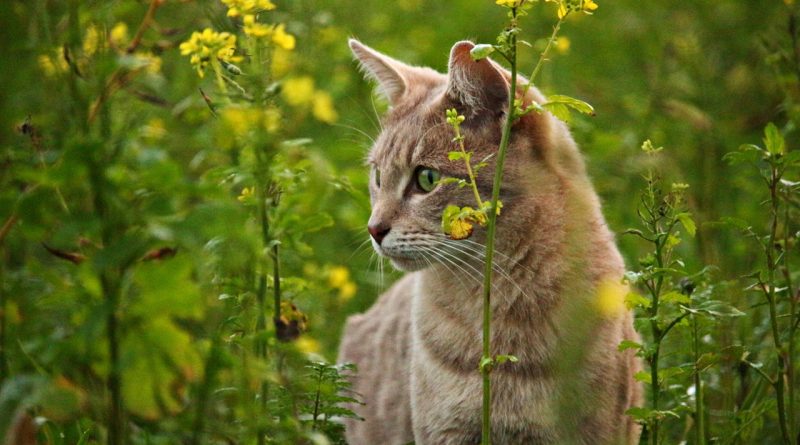Plants That Can Harm Cats
With Spring in full force, many cats will be itching (and scratching) to get outside and experience the abundance of the season: chasing bugs, chattering at birds, eating grass… the list goes on. Whether or not we let our cats outdoors, it’s important to be mindful of the plant life they will be exposed to, both inside and out.
According to Consumer Reports, lilies were cited as the most encountered poisonous plant for cats in 2016. They are extremely toxic, causing vomiting, lethargy, decreased urine output, and kidney failure. Others on the list include: autumn crocus, azalea, daffodil, dieffenbachia, tulip, kalanchoe (mother-in-law plant), sago palm, oleander, and cyclamen. Although all aspects of these plants are toxic, the bulb is the most poisonous part in the crocus, daffodil, and tulip. If ingested, common symptoms can include: mouth irritation and swelling, drooling, vomiting, diarrhea, seizures, heart, kidney, and liver irritation, and in some cases, death. (For a full list of both toxic and non-toxic plants from the ASPCA, please click here.)
It’s important to avoid having these plants in your house and your yard. In addition, if someone gives you a bouquet of flowers, be sure to inspect it before putting them in water, making sure to get rid of ones that are toxic. If you let your cats outdoors, make sure to monitor them closely.
Another hazard for outdoor cats is stagnant water. Cats seem to like to drink water from different sources, and when they’re outside, they may seek out puddles or other areas of stagnant water to quench their thirst. These sources can have bacteria that are harmful to cats. This is another reason to keep an eye on them.
If you suspect your cat has eaten (or even nibbled) a toxic plant, or if you’re uncertain if the plant eaten is toxic, cut off a portion of the plant and keep it in a resealable plastic bag. The identity of the plant is important in determining treatment. Be sure to remove any plant material from the cat’s fur and skin. And, if necessary, bathe the cat in warm water and a little dish soap. If s/he vomits, collect a sample to bring with you to the vet. Call your vet or the Pet Poison Helpline at 1-855-213-6680.
Other Sources:
http://www.petmd.com/cat/emergency/poisoning-toxicity/e_ct_poisonous_plants#
http://www.petmd.com/cat/slideshows/emergency/poisonous-plants-to-cats%20



